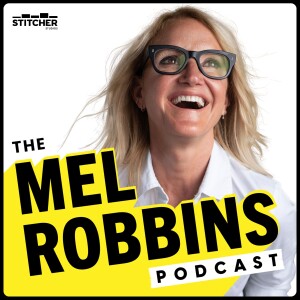
This week, we present part 2 of Chris’s interview with Dr. Kris Brock, an Assistant Professor at Idaho State University who shares his experience researching using animated AAC symbols to teach and represent verbs and prepositions.
Before the interview, Chris and Rachel share some of the resources that are being shared each week on the Talking with Tech Patreon page, including www.wombo.ai, mytalkingpet.com, biteable.com and more! If you are a TWT listener and would like to support the podcast while getting access to bonus resources and content each week, join our patreon at patreon.com/talkingwithtech!
Key ideas this week:
🔑 If you are searching for GIFs to teach verbs & prepositions, use caution in choosing GIFs that don’t move too fast and represent the concept you want to represent exactly.
🔑 Pairing the static symbol on an AAC user’s device with the animation they are watching can be more effective than trying to teach the meaning of the animation alone.
🔑 Pairing audio with animation can be a better choice than pairing text with animation because audio uses a different input modality. By using different channels, you can allow for more effective processing.
🔑 Studies have indicated that animated visual scene displays may help some AAC users (e.g. people with aphasia) to generate more complex communication than using a grid, which requires more internal processing to interpret.
Links this week:
www.wombo.ai
mytalkingpet.com
biteable.com
S. Berney, Mireille Bétrancourt (2016) Does Animation Enhance Learning? A Meta Analysis
Help us develop new content and keep the podcast going strong! Support our podcast at patreon.com/talkingwithtech!
Visit talkingwithtech.org to access previous episodes, resources, and CEU credits that you can earn for listening to TWT episodes!
More Episodes
Coaching Call with Sarah Seiger: AAC at a Nonpublic/Nonprofit School
 2023-06-07
2023-06-07
 3.9k
3.9k
Small Talks VII: Darla Ashton, Hank Poore, Sean Sweeney, Shelley Anderson, & Tami Altschuler
 2023-06-02
2023-06-02
 3.4k
3.4k
Samantha Hagness & Becky Woolley (Part 2) - Strategies for Improving Communication Partner Coaching
 2023-05-25
2023-05-25
 3.7k
3.7k
Samantha Hagness & Becky Woolley (Part 1) - Modeling AAC in the Classroom Using Grid 3
 2023-05-21
2023-05-21
 4.1k
4.1k
Alyssa Hillary Zisk and Lily Konyn: Gestalt Language Processing and AAC
 2023-05-10
2023-05-10
 7.4k
7.4k
Darla Ashton: What Have We Learned About AAC in the Last 10 Years?
 2023-05-05
2023-05-05
 4.5k
4.5k
Nanny Aut: Autistic Blogger, Advocate, and Teacher
 2023-04-26
2023-04-26
 3.9k
3.9k
LJ Seiff: 14-Year-Old AAC User
 2023-04-20
2023-04-20
 4.5k
4.5k
Kristina Edie, Erica Sauer, Joy Mockbee, & Bernadette Wiley: Exploring the Specific Language System First Approach (Part 2)
 2023-04-13
2023-04-13
 4.0k
4.0k
Kristina Edie, Erica Sauer, Joy Mockbee, & Bernadette Wiley: Exploring the Specific Language System First Approach (Part 1)
 2023-04-06
2023-04-06
 4.0k
4.0k
Bruce Alter: Pros and Cons of Allowing AI in Schools
 2023-04-03
2023-04-03
 4.6k
4.6k
Noah Callan: AAC User, Disability Advocate, and Technology Coordinator
 2023-03-23
2023-03-23
 4.4k
4.4k
Takeaways from ATIA 2023
 2023-03-15
2023-03-15
 4.5k
4.5k
Coaching Call with Marcella: Benefits of Early AAC Intervention
 2023-03-08
2023-03-08
 4.6k
4.6k
Dr. Theresa Bartolotta: Supporting AAC for People with Rett Syndrome
 2023-03-08
2023-03-08
 3.8k
3.8k
Sarah Lockhart: Using Requesting to Teach New Communication Functions
 2023-02-22
2023-02-22
 5.7k
5.7k
Chris Bugaj: Accessibility and Inclusion at Disney World
 2023-02-16
2023-02-16
 3.8k
3.8k
Jennifer Hyles: Creating Materials That Better Reflect AAC Users
 2023-02-03
2023-02-03
 4.4k
4.4k
Dr. Laura Clarke: Free Literacy Resources for Emerging Readers
 2023-01-25
2023-01-25
 5.0k
5.0k
Chloe Rothschild: Teacher, Author, Advocate, and Part-Time AAC User
 2023-01-18
2023-01-18
 4.3k
4.3k
Create your
podcast in
minutes
- Full-featured podcast site
- Unlimited storage and bandwidth
- Comprehensive podcast stats
- Distribute to Apple Podcasts, Spotify, and more
- Make money with your podcast
It is Free
You may also like

Mayo Clinic Talks


The Saad Truth with Dr. Saad


The Resilient Mind


The Jordan B. Peterson Podcast


The Mel Robbins Podcast


- Privacy Policy
- Cookie Policy
- Terms of Use
- Consent Preferences
- Copyright © 2015-2024 Podbean.com



 iOS
iOS Android
Android